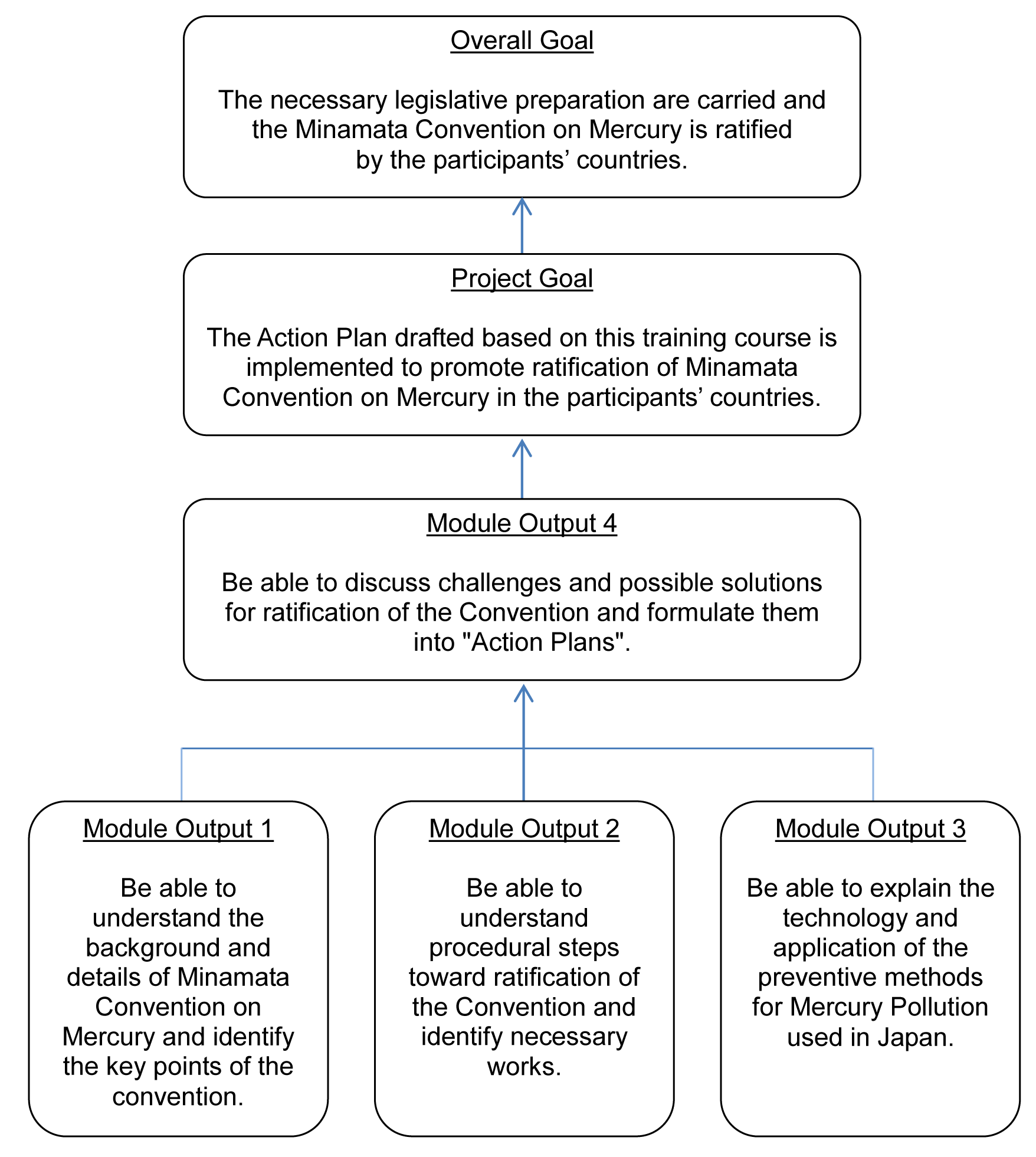GROUP AND REGION-FOCUSED TRAINING
I. Concept
Background
The use of mercury can be seen many phases of the life of people – the manufacturing of sodium hydroxide and vinyl chloride, the small-scale gold mining, etc.
However, mercury is a heavy metal occurring in several forms, all of which can produce toxic effects on human health. In fact, in some places such as Minamata in Japan, Whitedog in Canada, people suffered by the mercury poisoning – they unknowingly took bioconcentrated mercury from their foods. The adverse effect of mercury pollution on human health is known as Minamata Disease.
In January 2013, governments took a step forward to prevent the mercury pollution by agreeing a global Convention which covered emissions and releases of mercury. Then in October 2013, at the Conference of Plenipotentiaries in Minamata and Kumamoto, Japan, the “Minamata Convention on Mercury” was formally adopted and opened for signature.
The convention is an international treaty to regulate the import and export of mercury and manufacture of products using mercury. The convention aims to manage mercury internationally to prevent the mercury pollution, the adverse effects on human health and environment.
Now the convention was signed by 99 countries and ratified by one country.
It is the global issue to promote the ratification process of the convention to make the convention entry into force.
For what?
This program aims to improve participants’ understanding and capacity on procedures of legislative preparation for ratification of Minamata Convention on Mercury.
For whom?
This program is offered to administrative officers in charge of legislative preparation for ratification of Minamata Convention on Mercury
How?
The program provides lectures, inspections and practical works to share the lessons from Minamata Disease in Japan and Japan’s experience on the preparation. Then the program helps the participants to identify key points and requirements for the ratification of the Convention.
II. Description
1. Title (J-No.)
Capacity Building for Ratification of Minamata Convention on Mercury
(J1404110)
2. Course Period in JAPAN
November 26, 2014 to December 18, 2014
3. Target Regions or Countries
Brazil, China, Cook Islands, Ecuador, Kenya, Solomon Islands and Thailand.
4. Eligible / Target Organization
This program is designed for the governmental or public organizations which is engaged in the ratification of the Minamata Convention.
5. Course Capacity (Upper limit of Participants)
10 participants
6. Language to be used in this program
English
7. Course Objective
The Action Plan drafted based on this training course is implemented to promote ratification of Minamata Convention on Mercury in the participants’ countries.
8. Overall Goal
The necessary legislative preparation are carried and the Minamata
Convention on Mercury is ratified by the participants’ countries.
9. Expected Module Output and Contents
This program consists of the following components. Details on each component are given below:
|
Expected Module Output |
Subjects/Agendas |
Methodology |
|
1. Be able to understand the background and details of Minamata Convention on Mercury and identify the key points of the convention. |
(1) History of Minamata Disease |
Lecture Site visit and Exercise |
|
2. Be able to understand procedural steps toward ratification of the Convention, and identify necessary works. |
(1) Preparation Process for the Ratification of the Convention by Japan |
Lecture Site visit and Exercise |
|
3. Be able to explain the technology and application of the preventive methods for Mercury Pollution used in Japan. |
(1) Countermeasures for Mercury Pollution Taken and Material Flow of Mercury in Japan |
Lecture Site visit |
|
4. Be able to discuss challenges and possible solutions for ratification of the Convention and formulate them into “Action Plans”. |
(1) Job Report Presentation |
Lecture and Exercise |
<Structure of the program>



